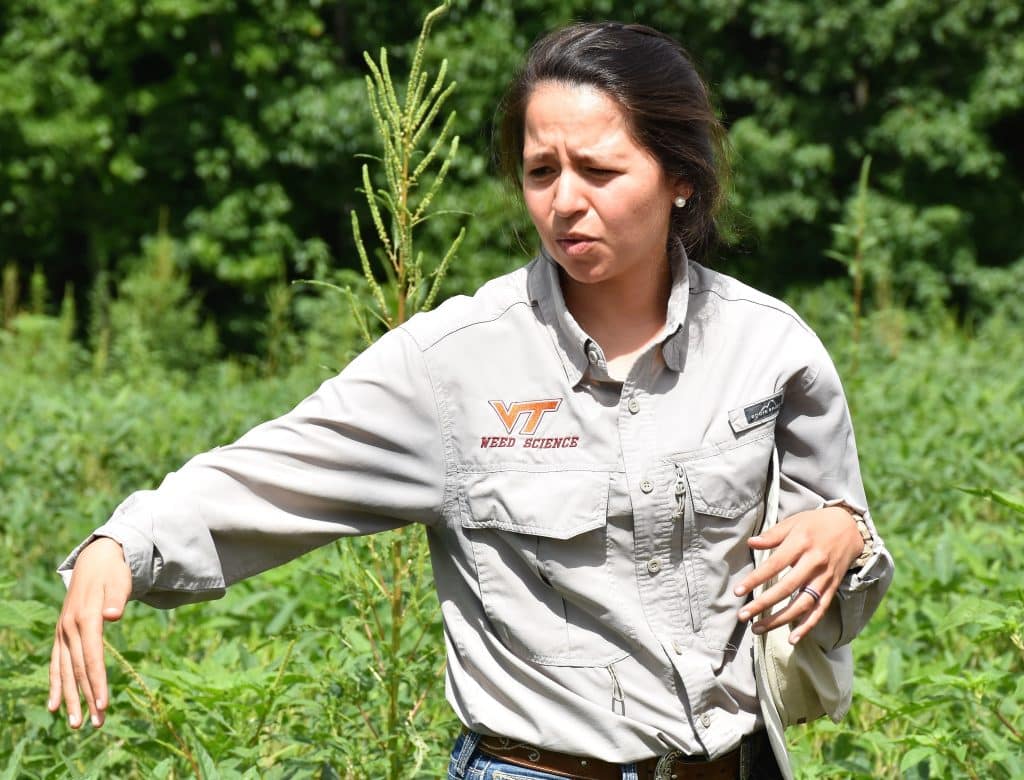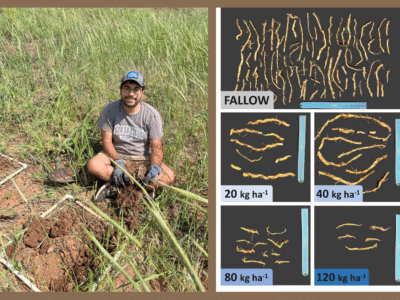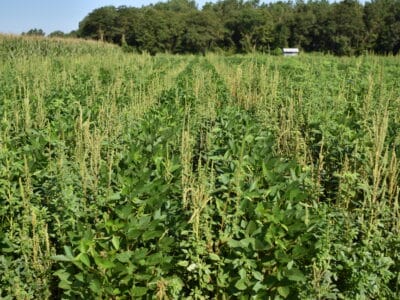Just like any other crop, winter weeds can outcompete a cover crop if that cover crop has poor germination or establishment. So should farmers treat their covers like a cash crop, by using pre-plant burndown herbicides in front of cover crops to control winter weeds and give the cover crop a competing advantage? Or is planting date and species selection more important?

My research team at Virginia Tech wanted to answer these questions for cover crop growers. Previous research has shown that cover crop biomass is the most important factor in reducing winter weeds and early spring weeds. But in order to achieve larger quantities of biomass, the cover crop needs good growing conditions.
We evaluated three different cover crop species (cereal rye, hairy vetch, and crimson clover) and one cover crop mix (cereal rye + hairy vetch). Each type of cover was evaluated with either the presence or absence of a pre-plant application of paraquat to see how the herbicide application might affect their establishment and biomass. We also evaluated the effect of a cover crop’s planting date, which depends on the preceding cash crop’s harvest window.
Our Research Findings
Ultimately, our study found that earlier planting is more beneficial to cover crop biomass accumulation than a pre-plant application of paraquat.
Ultimately, our study found that earlier planting is more beneficial to cover crop biomass accumulation than a pre-plant application of paraquat.
Cynthia Sias, Virginia Tech
Earlier cover crop planting, most feasible following corn versus later harvested soybean, led to more cover crop biomass accumulation. Paraquat applied at planting did not influence cover crop biomass accumulation, despite helping with winter weeds. That means that growers can expect more biomass – with or without pre-plant herbicides – when planting cover crops following corn due to earlier planting dates and more growing time.
Additionally, our study concluded that the cover crop species is also important in determining the amount of biomass produced. We found that cereal rye or cereal rye containing mixes (in our case hairy vetch + cereal rye) produced significantly more biomass than hairy vetch alone or crimson clover alone.
Additionally, we determined that not all weed suppression by cover crops is equal. Weed control focused on winter species directly competing with cover crop growth, potentially inhibiting biomass production. Mouse ear chickweed averaged only 42% suppression from a cereal rye + hairy vetch cover crop compared to winter fallow, while henbit averaged 62% suppression from the same cover crop. Similarly, crimson clover showed variable suppression of weed species, producing only 29% suppression of mouse ear chickweed and 43% suppression of purple deadnettle.
Overall, our study found that it did not always make sense to add a pre-plant herbicide at cover crop planting. When winter weed suppression is the goal, a burndown herbicide at cover crop planting may be warranted. But when cover crop biomass accumulation is the goal, the application of preplant paraquat did not affect total cover crop biomass production. When weed suppression in the following cash crop is the goal of the cover crop, selecting high-biomass-producing species such as cereal rye or cereal rye mixtures is recommended along with early fall planting.


Researchers sampled for weeds within a quarter square meter quadrant in both cereal rye plots (left) and bareground plots, with no cover (right). (Photo credit: Cynthia Sias, Virginia Tech).
Why We Need Research Like This
Herbicide-resistant weeds are becoming an increasingly difficult challenge to overcome for growers. On top of this, new federal label restrictions on pesticide use are underway as a result of the Endangered Species Act, which could leave growers with more limited options, as far as the chemistries they have access to. Cover crops have shown to be successful tools when it comes to suppressing weeds for cash crops; however, cover crops must, too, be managed properly in order to reap the benefits associated with them.
These results show that depending on the goals of the cover crop, pre-plant herbicide applications are not always necessary. Additionally, selecting high-biomass-producing cover crop species and planting early are the most important factors for encouraging biomass production and therefore weed suppression in following cash crops.
Non-chemical weed management strategies are needed for integrated weed management. Applied research like this provides farmers with recommendations as to the inputs that are actually needed and those that they can forgo. This information can therefore lead to saved expenses for farm operations.
See more details on this study from Virginia Tech here.
For more information on using cover crops for weed control, see this GROW webpage and these GROW news stories.

Article and photos by Cynthia Sias, Virginia Tech





























































































